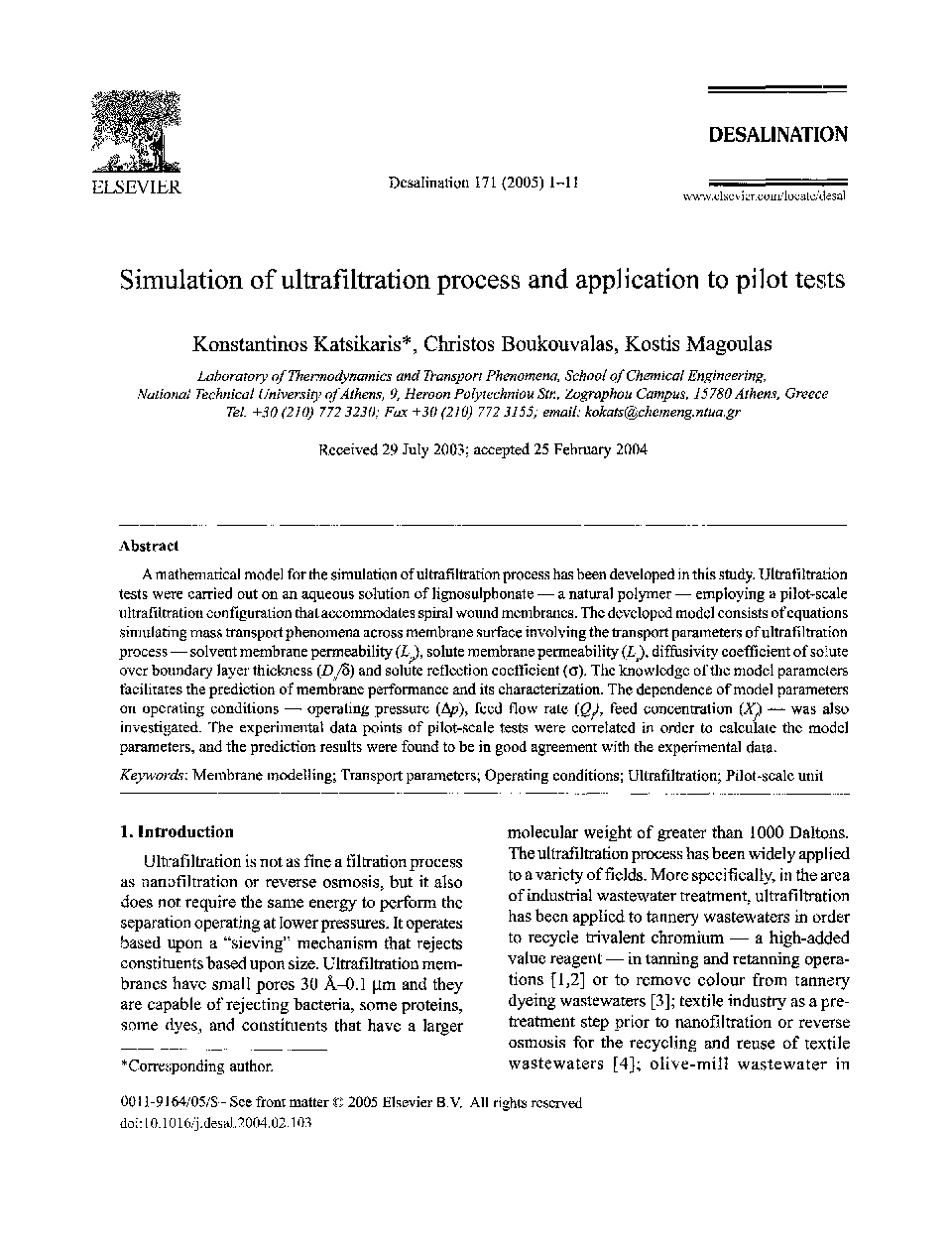| Article ID | Journal | Published Year | Pages | File Type |
|---|---|---|---|---|
| 10386226 | Desalination | 2005 | 11 Pages |
Abstract
A mathematical model for the simulation of ultrafiltrationprocess has been developed in this study. Ultrafiltration tests were carried out on an aqueous solution of lignosulphonate - a natural polymer - employing a pilot-scale ultrafiltration configuration that accommodates spiral wound membranes. The developed model consists of equations simulating mass transport phenomena across membrane surface involving the transport parameters of ultrafiltration process - solvent membrane permeability (Lp), solute membrane permeability (Ls), diffusivity coefficient of solute over boundary layer thickness (Ds/δ) and solute reflection coefficient (Ï). The knowledge of the model parameters facilitates the prediction of membrane performance and its characterization. The dependence of model parameters on operating conditions - operating pressure (Îp), feed flow rate (Qf), feed concentration (Xf) - was also investigated. The experimental data points of pilot-scale tests were correlated in order to calculate the model parameters, and the prediction results were found to be in good agreement with the experimental data.
Related Topics
Physical Sciences and Engineering
Chemical Engineering
Filtration and Separation
Authors
Konstantinos Katsikaris, Christos Boukouvalas, Kostis Magoulas,
